A stećak is a medieval tombstone, characteristic of certain parts of the Balkans, mostly Bosnia and Herzegovina. In the town called Stolac in Bosnia and Herzegovina, there is this country’s most famous stećak necropolis.
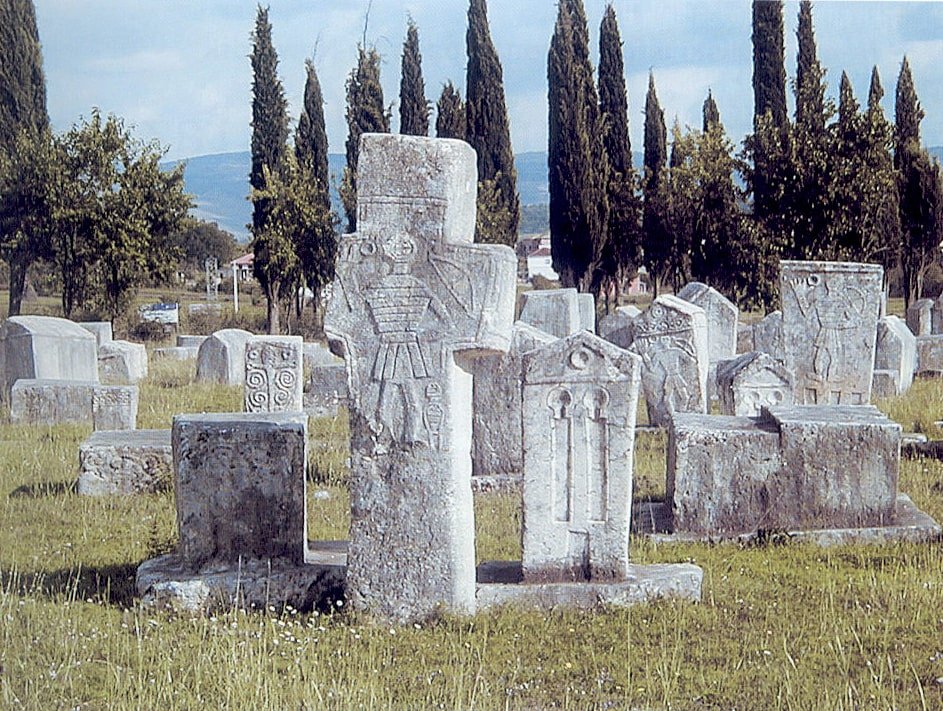
Stolac is located in southeastern Bosnia and Herzegovina, in the extreme east of Herzegovina-Neretva County. The city was built on the banks of the Bregava river, in the valley, and is surrounded by the Hrgud mountains and Vidovo polje.
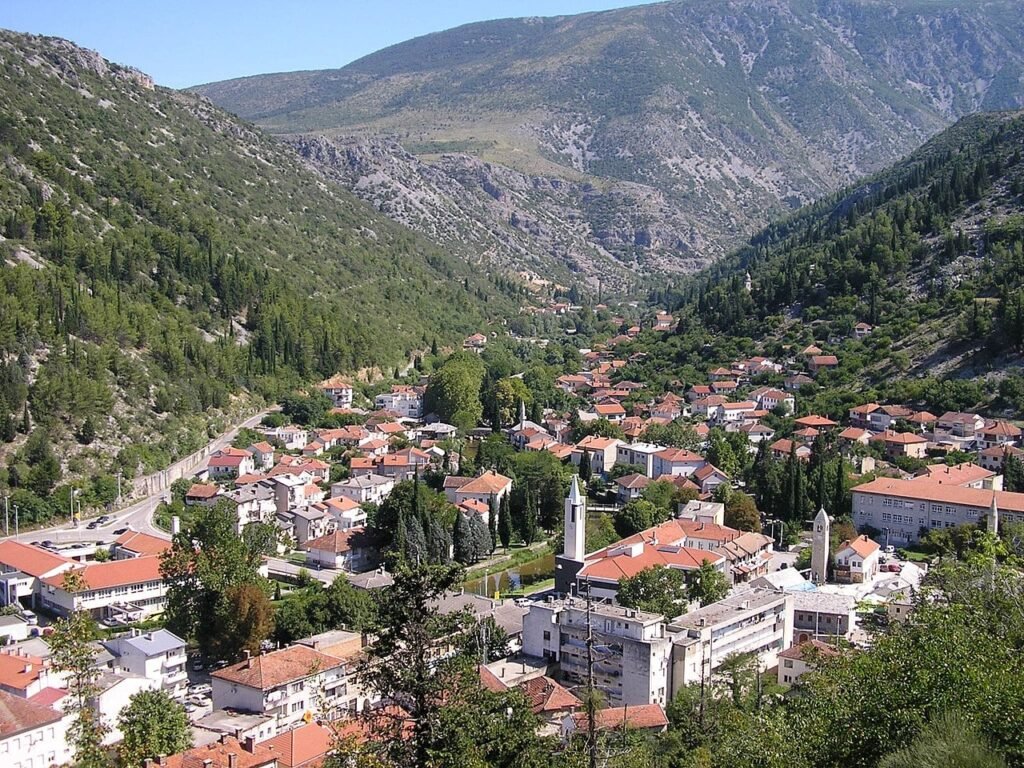
The Stolac area has attracted people since prehistoric times with its Mediterranean charm, good water, mild skies, gentle landscape, and natural beauty. Illyrians and Greek sailors, Roman patricians, Eastern Gothic conquerors, Slavic dignitaries, Ottoman nobles, Venetian generals, Austro-Hungarian governors, and many devotees of the sun, the freshness of the Bregava River, cultural and historical values and secret messages from past centuries, left their mark here: castles and graves, names on plaques – messages for those who will come after them.
Stećak (plural: stećci) is a common name for a stone tombstone from the Middle Ages in the wider area of Bosnia and Herzegovina, northwestern parts of Montenegro, western parts of Serbia, and southern parts of Croatia, mainly in Dalmatia.
Stećci and their necropolises are one of the mysteries of Bosnian history. The biggest dilemmas come down to the questions of their origin, the affiliation of the deceased who were buried under the stećak, as well as the symbolic messages carried by the individual representations carved on them.
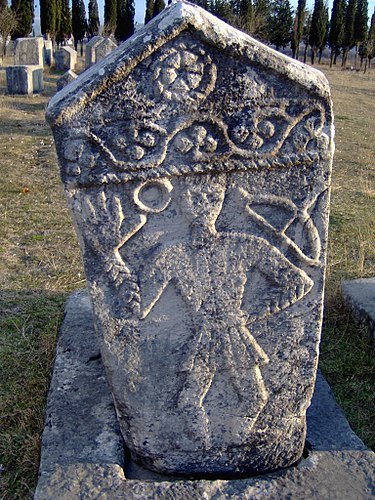
The most information for historians is provided by the inscriptions that characterize a smaller number of these stone monuments. The inscriptions speak of the different social statuses of the persons buried under the stećci and different religious affiliations. This justifies the statement about stećci as tombstones of the inhabitants of medieval Bosnia.
According to the 1971 census, 59,593 stećci have been preserved in today’s Bosnia and Herzegovina, 2,267 in Serbia, 3,407 in Montenegro, and 4,497 in Croatia.
The stećak necropolis of Radimlja is located in Ošanjići settlement, 3 km west of Stolac, on the road Čapljina – Stolac, Bosnia and Herzegovina.
Most of the tombstones date from the 15th and 16th centuries. In that period in Ošanjići (the medieval name is Batnoge), the noble family Hrabreni-Miloradovići lived.
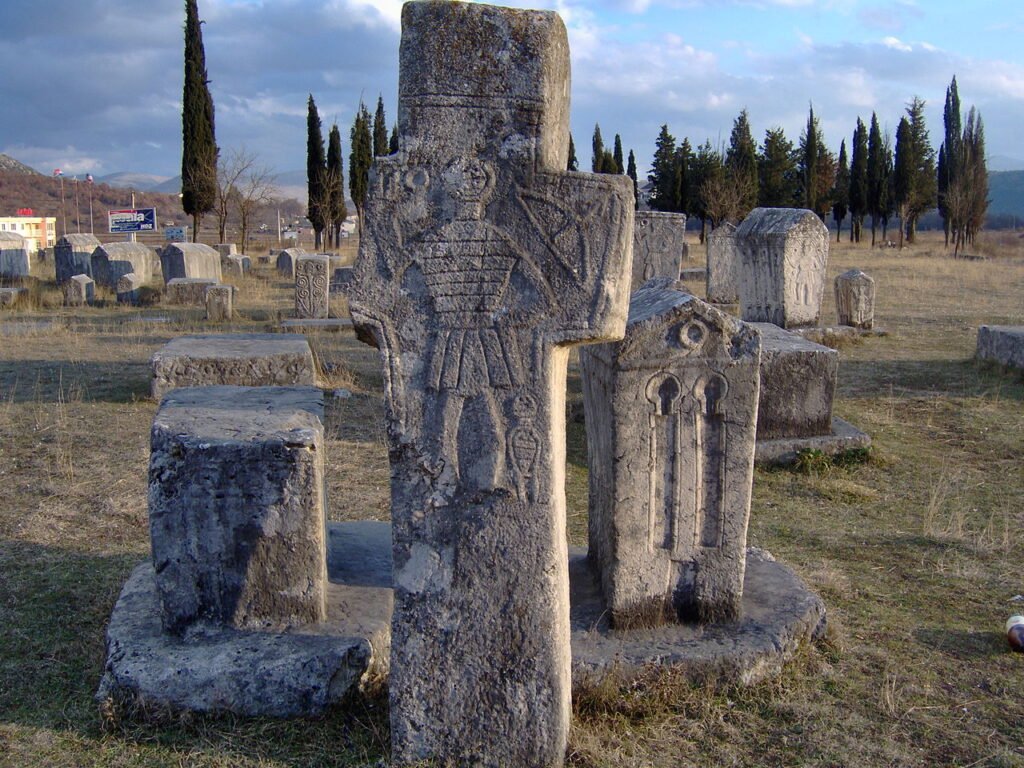
The necropolis of Radimlja is one of the most valuable and significant stećak necropolises in Bosnia and Herzegovina, as well as in general.
This necropolis was placed under protection as a cultural monument of Bosnia and Herzegovina on December 22, 1967, and was declared a national monument in 2002.
The necropolis consists of 133 monuments. Inscriptions appear on five monuments, under which some members of the family Hrabren Miloradović are buried. The Hrabren-Miloradovići was a medieval feudal family from Dubrava parish, Hum region.
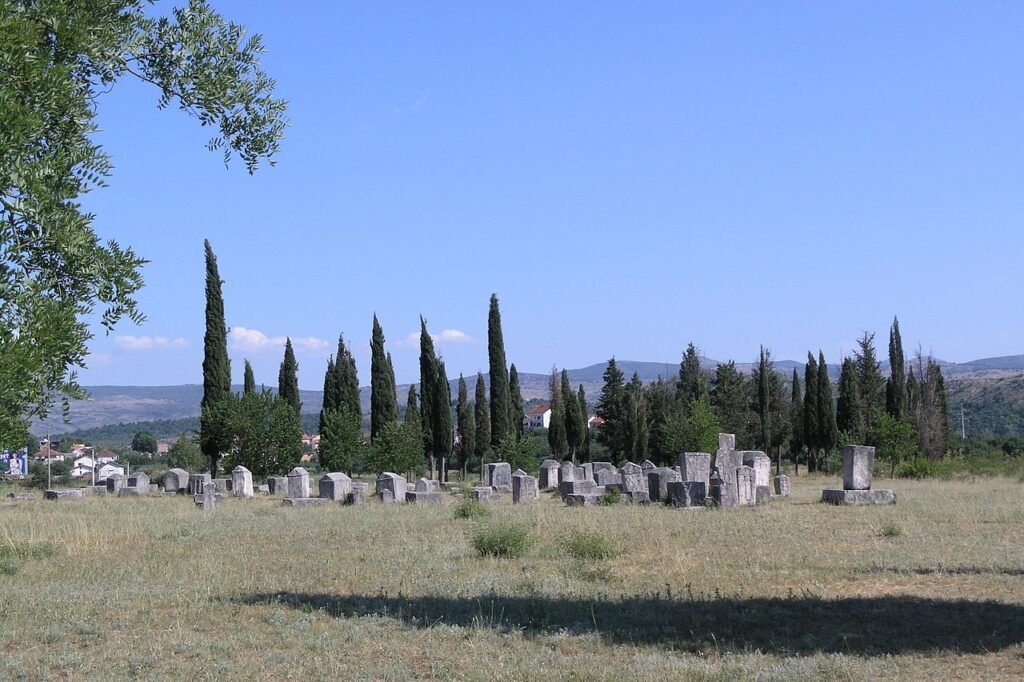
Radimlja is on the list of 28 medieval stećak necropolises that were declared a UNESCO World Heritage Site in 2016.
Visit our social media profiles as well: